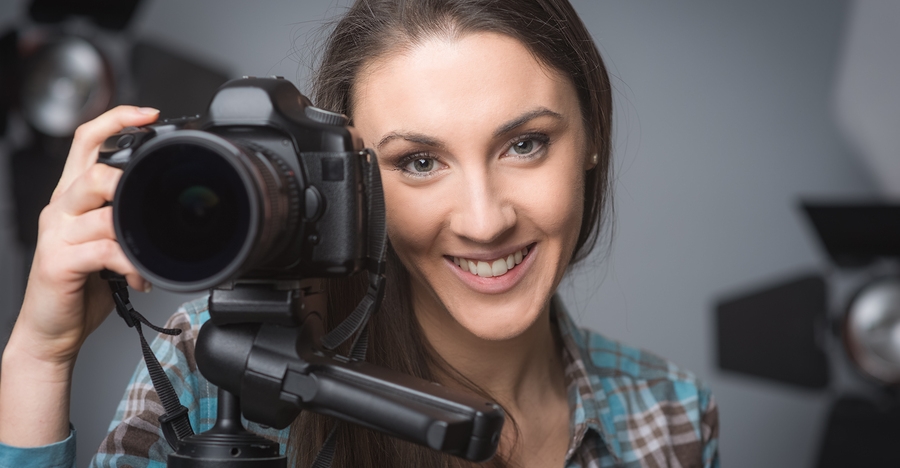This article over at Tuts+ is helpful even if you are already in the photography business.
We all know how expensive gear is so it gives you a great advantage to put together this kit and update it piece by piece once your budget allows it! Here’s what you need to get started.
You don’t need expensive gear to make great photos, but if you’re doing professional work a big part of what your clients are paying for is peace of mind. They want to know that you’ll actually deliver the pictures they’re hiring you to take. Photographers love their gear, no doubt, but one of the main reasons working shooters fork out top dollar for kit is because they need to look professional.
If you want to experiment, though, there are many good reasons not to buy gear. Until you really know what you want, I recommend you borrow, rent, and build your own. Give yourself the opportunity to play with lighting styles, tools, and tricks before you invest.
Before we get into the main kit, here are some super-cheap items everyone should have in their bag.
- Clothespins and binder clamps.
- “Pony Clamp” or “A-Clamp”: these are useful for anything and everything.
- Gaffer Tape: All the power of duct tape without the leftover residue.
- Safety Pins: Ever had a pesky piece of clothing not sit where you want it to? Pin it.
- Leatherman and Multitool: The leatherman has everything you need for a quick fix-it job, and the multitool has a complete set of allen keys.
- Reflectors: Anything that reflects light can be a reflector, but keep an eye out for sales. I was able to grab 5-in-1 reflectors in 22″ and 42″ for $10.
- Flashlight: If you have one that is power enough to use as a light in a pinch, great! But I keep a flashlight in case you are ever caught on location in the dark.
- Clip-on Camping Light: Clips on to the lens hood of your lens and allows you to light your subject enough to get focus without affecting your exposure when using flash.
- Extra Batteries: Have extras for anything you have on set. I have camera batteries, AAs, and 9 volts
Modify a Suitcase for Gear Protection
For most of my shoots, I use a variety of flash heads and modifiers. The bag I had my eye on when I was building my system was the ThinkTank Logistics Manager. That bag is a beauty, but it’s also out of my price range. Instead, I took a normal suitcase-style rolling bag and modified it to have the same carrying capacity and protection as the Logistics Manager. This saved me hundreds of dollars.
- Velcro
- Sewing Thread
- Headliner fabric
- 1″ high density foam
This is my basic layout:
- I use two large flash heads, and I put them at the bottom of the bag (they are heaviest)
- Then two small flash heads
- At the top of the bag, my reflector dishes (which are a little bit fragile), speedlight brackets, extension cords, and any other medium-sized miscellaneous items
Measure your inside dimensions, as well as any cross sections that you want to protect each individual item. Cut the foam first – it may be best to cut a little larger than you think, then shave the foam down, instead of cutting it too small and leaving it loose.
Sew the headliner around the foam. The important thing is that it’s fabric on one side and foam on the other, so the velcro will stick to the fabric side when you have inserts. I made the outside one continuous piece, with the four side foam pieces, so it has structure and stays together.
DIY Softbox
- Cardboard Box
- Tin Foil
- Napkins
- Tape
I use several speedlites and a set of Pocket Wizard triggers. However, this could easily be done with a high-output flashlight, or even a lamp without a shade. Basically, whatever light is available to you, put it in the box!
Flash Kits
The fundamentals of flash gear hasn’t changed in some time. The flash a pretty mature piece of technology! And with the high sensitivity of digital cameras (compared to film), a less-powerful flash is often adequate for basic portraiture. Older units from Canon, Nikon, Vivitar (the 283 and 285), and Metz all make terrific flash heads when put on a stand.
The other thing to think about is the importance of technique over technology. The difference between a good portrait and a missed opportunity is often a very small amount of light. With practice, you can get great results by reading the scene and adding just a little extra light.
Get even more tips on building a budget lighting kit over at Tuts+.
Source: Tuts+

